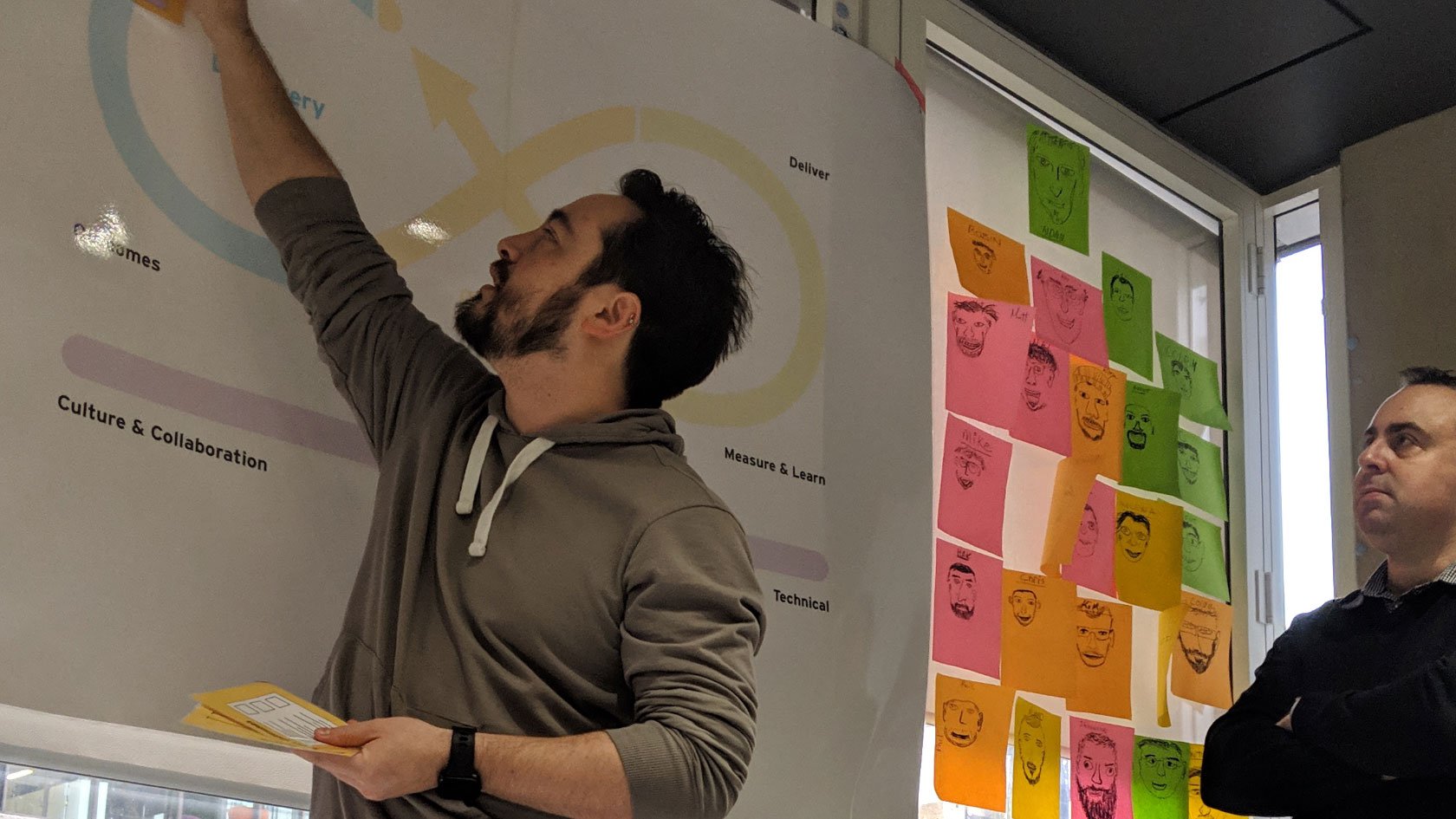
RedHat
Open Innovation
Open innovation at Red Hat
The challenge
How can we help our customers keep track of the hundreds of different practices available and deliver the outcomes that matter?
The Outcomes
Mobius has been adopted globally for Red Hat’s Open Innovation Labs and the community-driven Open Practice Library they’ve kick-started. It has significantly improved alignment, communication and collaboration between leadership and delivery teams, and positively impacted the products delivered within Red Hat’s customers.
Red Hat connects its customers with the people, processes and open source tools needed to ramp up the pace of innovation in an immersive 4-12 week residency style engagement. Customers seeking to adopt emerging technologies and rapidly increase speed to value become “residents” working alongside Red Hat engineers and coaches to deliver incremental outcomes of a real business use case. Residencies are not locked into a prescribed group of methods or practices so customers are able to identify and chart the best path forward as a team and use Mobius as a navigator to leverage the best of DevOps, Agile, eXtreme Programming, LeanUX and Continuous Delivery. Customers leave their residency having delivered business value through new modern application development and also with a wide range of new skills and applied practices all visualised on a Mobius Loop they take with them back to their own base.
Tim Beattie from Red Hat’s Open Innovation Labs helps clients transition from traditional business models and ways of working to be more adaptive, open and innovative. This process can be painful and slow. Red Hat’s Open Innovation Labs help fast track the process by taking customers through an immersive residency where they co-create and learn by doing.
The clients range from aerospace, banking, automotive, energy, government, healthcare and everything in-between. Each client has a very different context, business language, and set of practices they need to use. The magic ingredients are all out there, but the problem is how to navigate your way through them and apply them to your own situation.
Many of the current frameworks specialize in one particular area, but don’t address all the facets from discovery through to delivery. Tim was drawn to Mobius as it focuses on the outcomes, and lets people decide which practices they will add, based on their own unique situation. Mobius works with existing frameworks and is completely agnostic.
A typical journey starts with a Discovery loop with a focus on Why and Who. They use practices such as Impact Mapping, How Might We and Empathy Mapping to get a shared understanding of what problems they’re trying to solve, who they’re trying to solive them for and what pains and gains they’re trying to achieve.
The residency teams make heavy use of Domain Driven Design with practices such as Event Storming and Value Slicing used to drive out an initial set of target measurable outcomes to focus the team on.
This doesn’t take months or even weeks. Typically a Labs residency moves through this Discovery Loop in just a few days with “just enough” alignment and shared understanding of Options to commence delivery. These options are hypothesis that that cross-functional development team comprising Red Hat and customer engineers can run conduct research and experiments and implement ideas into increments of the product.
The residency team then works to validate hypothesis seeking feedback, learning and measurements along the way as they move around the Delivery Loop. Teams often work in one week iterations and then have the opportunity to pivot back into Discovery and process measurements and learning to enhance existing Discovery artefacts and understanding. Alternatively, if further options need to be delivered, they can do another iteration of Delivery. As the team and organisation matures, the practices used in the loops may also extend and mature by, for example, moving to a increased Continuous Delivery of value approach.
Of course, Red Hat’s expertise in modern software development is leveraged throughout residencies and beyond - teams learn foundation technical practices and are exposed to Red Hat’s open source culture of collaboration throughout - all of this underpins and enables the teams to move swiftly and seemlessly around the continuous loops of Discovery and Delivery. With so many practices being used to drive this way of working, people can find it difficult to recall which practices worked well and where, how they interconnected with each other and what principles they helped exhibit. So every residency builds up a “practice corner” which is incrementally built up as practices are first adopted and visualised on a Mobius Loop.
The culmination of every Open Innovation Labs residency is “Demo Day.” This is an opportunity for the customer team to showcase back to their organisation and stakeholders the outcomes that have been delivered and the ways of working adopted to get them there. The Mobius Loop is a powerful visualisation tool used in these events to bring everything together and to show how all the practices connect together to deliver these outcomes.
Get in touch for a Mobius coach to lead your next innovation workshop.



